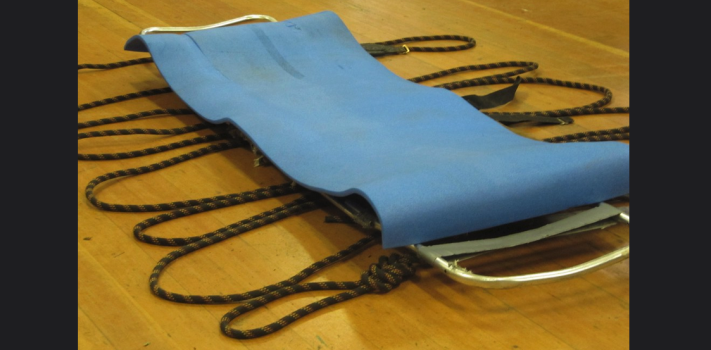One thing that I’ve stressed in SurvivalBlog over the years is the importance of training. Reading and research by themselves are great, but they are no substitute for practical hands-on training.
Last year, one of my personal resolutions was to get refresher training, in several areas. In December, my family attended a one-evening CPR class. And in January we all took a two-day Wilderness First Aid (WFA) course. The latter was fairly intense training with plenty of hands-on outdoor practical exercises. For me, these classes served as a reminder that most skills are perishable. It also reminded me that some terminology and doctrine evolve over time. For example, I had read that CPR doctrine had evolved to “chest compressions only” when responding to most suspected adult heart attacks. But I hadn’t heard that the terminology for burns had been updated. The traditional terms “first degree”, “second degree”, and “third degree” to describe burns have been expanded, as follows:
- Superficial (first-degree) involves the epidermis of the skin only.
- Superficial partial-thickness (second-degree) involves the superficial dermis. It appears red with blisters and is wet.
- Deep partial-thickness (second-degree) involves the deeper dermis. It appears yellow or white, is dry, and does not blanch with pressure.
- Third-degree involves the full thickness of skin and subcutaneous structures. It appears white or black/brown. With pressure, no blanching occurs. The burn is leathery and dry. There is minimal to no pain because of decreased sensation.
That is just one example of where I found that my training was out-of-date.
Learning More
I’d also like to encourage my readers to broaden the horizons of their training. Many of you already have first aid, CPR, and firearms training. But have you taken a lockpicking course, a knife-fighting class, or an urban escape and evasion course? The latter is taught by one of our kind writing contest prize donors, onPoint Tactical. They even offer an off-grid dental course.
Keep in mind that not all of your training will come from formal schools. You may learn pressure canning from a neighbor. Or learn knot tying from a co-worker. Or you can learn sheep shearing or farrier work, just by offering to ride along, as an unpaid “helper.”
Topics to Consider
Even the most outdoorsy sprout-eating folks who have taken all the intense mountaineering and whitewater rafting courses may have overlooked some important fundamental skills. Many of these are taught at community colleges, at a just minimal cost. Just a few examples:
- Small Engine Repair
- Martial Arts
- Beekeeping
- Forestry
- Pottery
- Animal Science
- Soil Science
- Fiber Working
And don’t overlook the more traditional skills like blacksmithing and knifemaking. There are classes taught all around the country. And there are apprenticeship programs available — both short courses and longer, more in-depth training. There are even short courses in locksmithing available, ranging from one to five days.
Fiber arts — including sheep shearing, wool carding, dyeing, spinning, and weaving — are also taught quite widely around the U.S. and Canada. Many of these classes are available for free or at very little cost.
Also, consider volunteering with a group like Trail Life. That is a Christian alternative to the now morally bankrupt “Scouting, USA”. By assisting young men in their training, you will pick up a lot of skills, by osmosis.
Hands-On Food Storage
Dry-pack canning used to be taught by nearly all of the 101 LDS church Home Storage Centers. But now most of them no longer allow hands-on packing, by individuals. Sadly, there are now only twelve remaining “Fully Operating” LDS Canneries that allow self-canning of bulk food items:
- Lethbridge, Alberta, Canada
- Mesa, Arizona
- Boise, Idaho
- Idaho Falls, Idaho
- Carrollton, Texas
- Lindon, Utah
- Logan, Utah
- Ogden, Utah
- Salt Lake City, Utah (Welfare Square)
- Sandy, Utah
- Springville, Utah
- St. George, Utah
Advanced MediCal Training
Once you’ve attended the Red Cross basic and advanced first aid courses, you should consider more in-depth courses, including the Wilderness First Responder (WFR or “Woofer”) course. There are also special courses intended for survivalists and preppers operating in austere conditions, such as those taught by Patriot Nurse or those by Dr. Bones and Nurse Amy.
Firearms Training
I encourage ongoing firearms training. Frequent training is particularly important because fine motor skills are perishable, and in high-stress situations, you will surely default to the level of your training. There is an oft-quoted saying: “On your best day in combat, you’ll be no better than your bad days at the range.” Organizations like Gunsight Academy offer very professional training that will get you up to speed quickly. I suggest that you take as many courses as you can afford and that your schedule allows. And if you live in any of the western states, then don’t overlook taking a long-range shooting course. Darrell Holland teaches one of the best.
All-in-all, remember that learning is something that should go on for a lifetime. I look forward to someday attending training side-by-side with my grandchildren. It will be first-time training for them, but refresher training for me and my wife “Avalanche Lily.” I can think of no better legacy for us to pass on to them. – JWR










